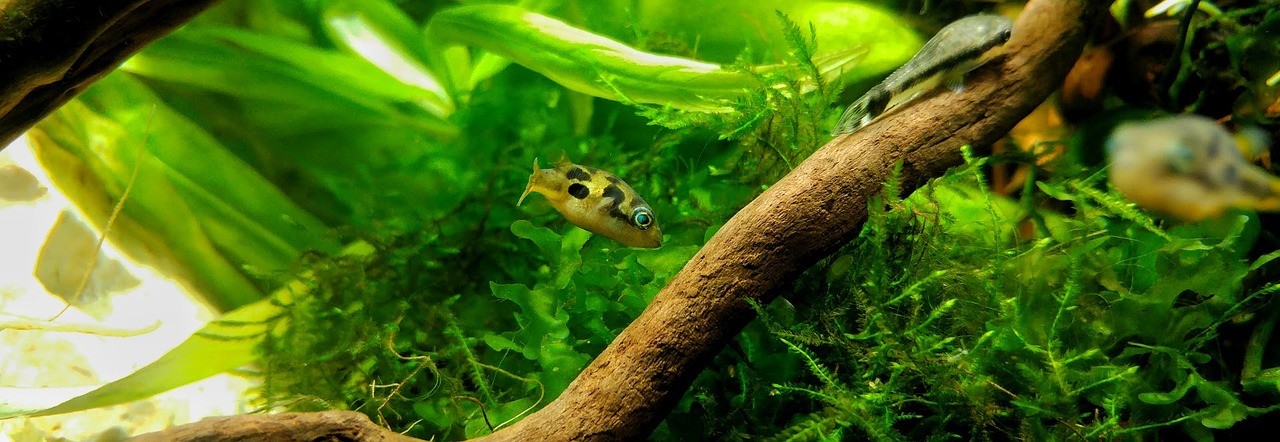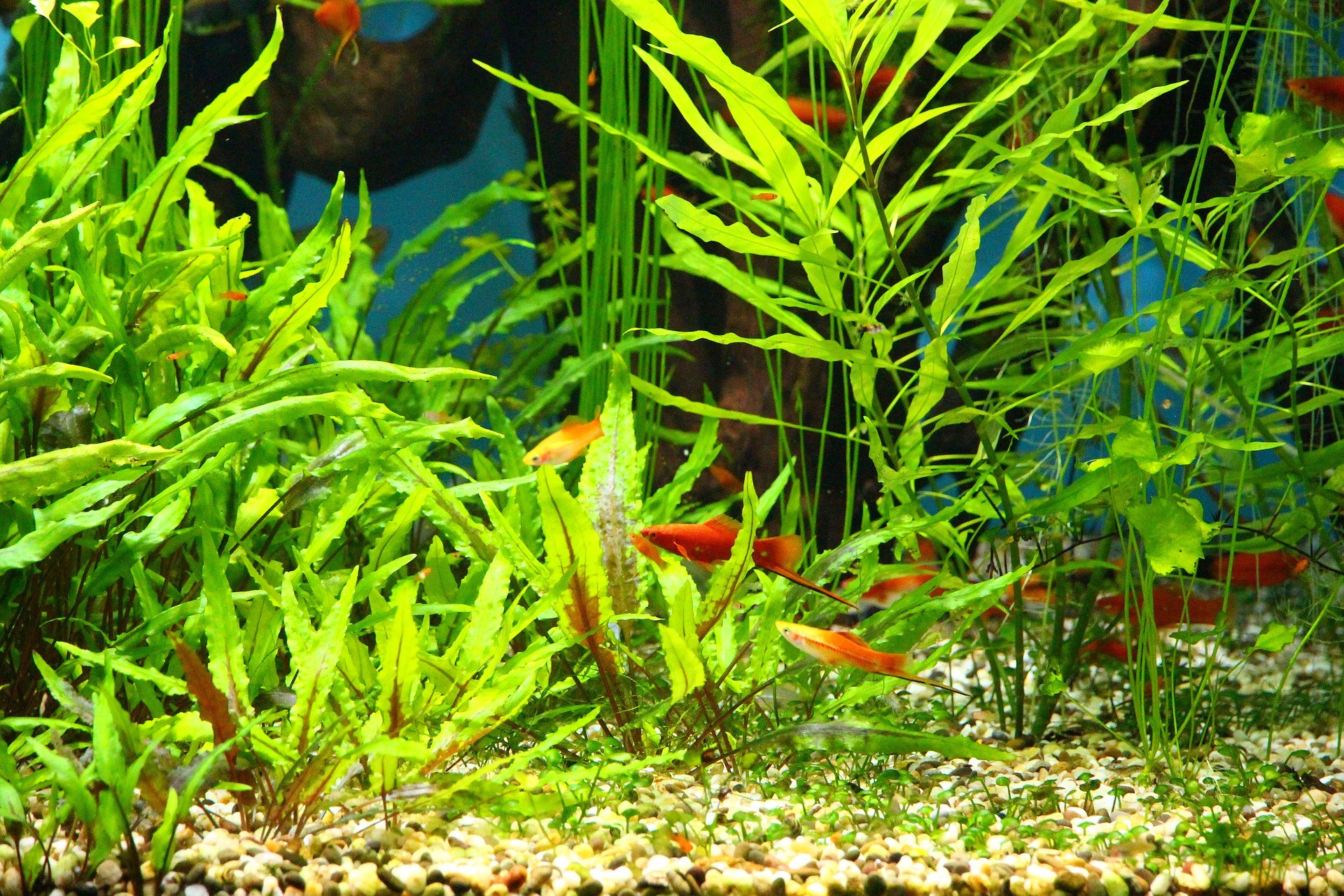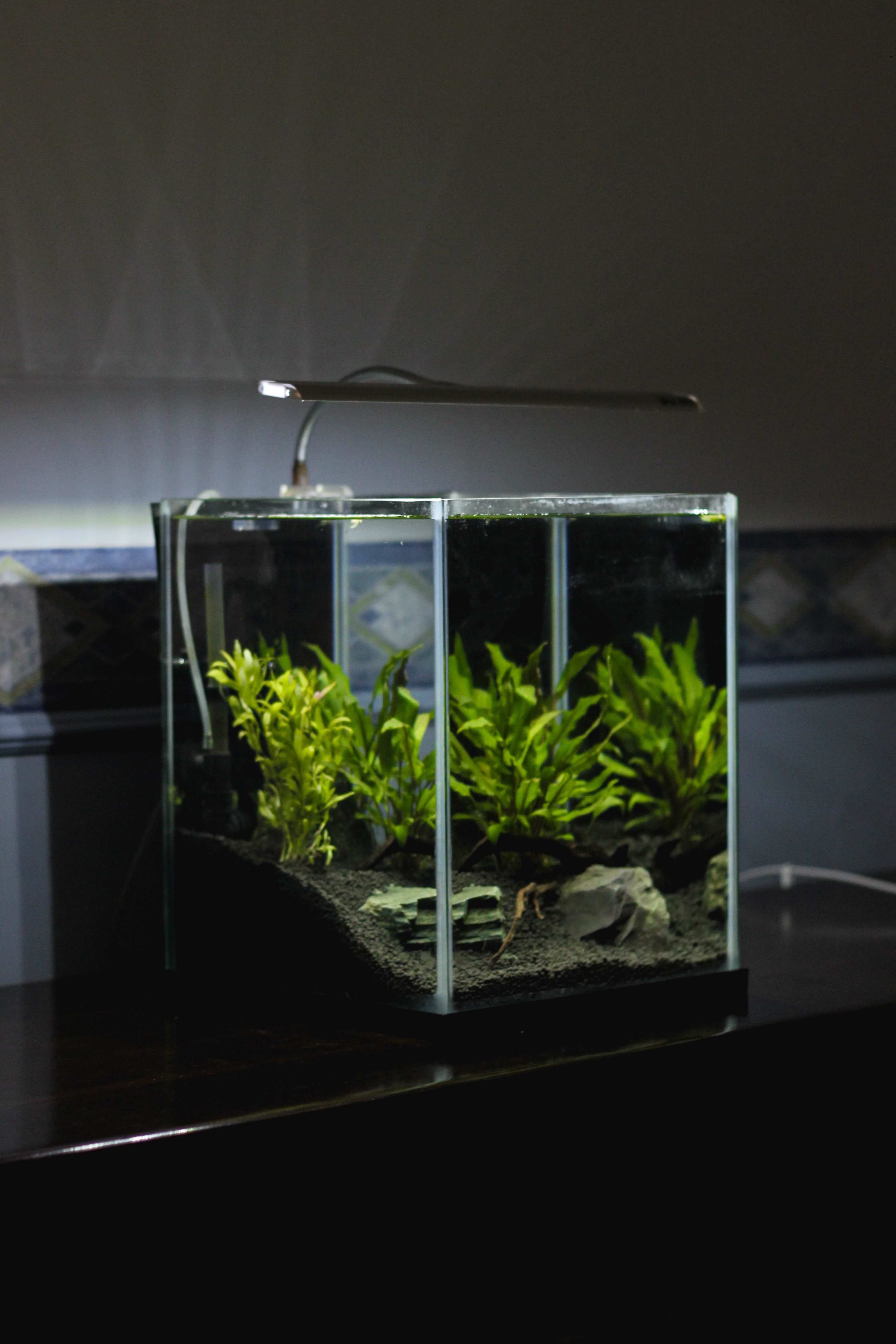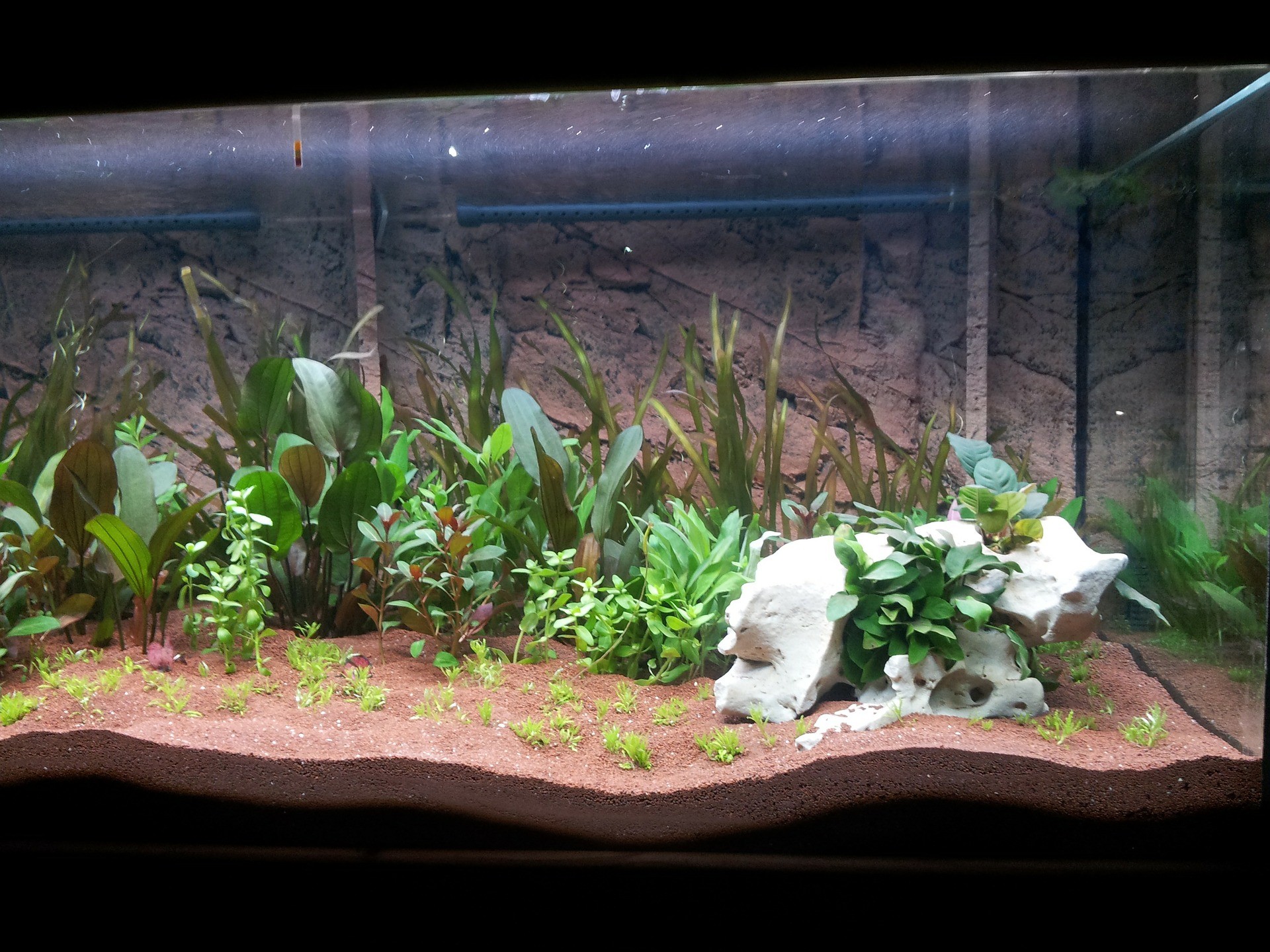How To Start A Planted Aquarium On A Budget
- Apr 23, 2021
- Rita
- 2266 0 0

Are you thinking of starting a planted aquarium but cannot afford all the expensive equipment? Planted aquariums have become very popular due to the natural beauty and other benefits live plants bring to your tank. However, many beginners start and fail to keep their new aquarium plants from dying off or melting away, but that doesn’t have to be you.
Let’s take a look at what you need to know to start a successful planted aquarium on a budget.

The Benefits And Drawbacks Of Keeping A Planted Aquarium
As an aquarium hobbyist, you might have heard how great planted tanks are, but have you really considered why they’ve become so popular? Let’s look at some of the benefits and drawbacks of keeping a planted aquarium to help you decide if this is the right step for you.
Benefits
- Live plants absorb nitrates and other waste products and thus keeps them from harming your fish
- Competes with algae for nutrients and thus reduce algae growth in your tank
- Helps to cycle your tank due to creating an ideal environment for microfauna to live in
- They also convert carbon dioxide (CO₂) into oxygen for your fish to breath
- Your tank will have natural beauty and, depending on size, will require fewer water changes
- Plants provide shelter and a place for your fish to breed
- Breaks up sightlines which are great for territorial fish
- Can be used to improve aesthetics by concealing aquarium fixtures
- Live plants are soft and thus won’t harm your fish
Drawbacks
- Live plants are usually a little more expensive than their fake counterparts
- The plants can get sick and die or carry unwanted parasites
- Some live plants require a lot of care and maintenance
- Some live plants need special conditions to grow and thrive in
- Your fish might snack on your live plants
Things To Consider When Starting A Planted Aquarium
It can be very tempting to set up your aquarium in one day, but in most cases, this is a recipe for disaster, especially if you’re thinking of adding fish. Aquariums need to go through a cycling process during which healthy bacteria develop to deal with the waste in the tank. During this process, the water quality and parameters will vary widely making your tank a death trap for most fish species.
Fortunately, you can add your plants on day one. Plants aren’t as badly affected by changes in water quality and parameters like fish are, but there are still a few things to consider before running off to buy your plants.

Substrate
To successfully grow plants in your tank, you will need to make sure you have the right substrate (the soil at the bottom of your tank). Plants will absorb some nutrients from the water, but most plants will also need nutrients from the substrate that they absorb with their roots. A substrate is also necessary to root some plants. Most substrates that are great for fish, just don’t have any nutrient value for your plants, so you will need to choose a complete substrate specifically for plants or create your own.
If you’re working on a budget, creating your own might be the way to go. You can create your own substrate by sifting and then baking some potting compost to remove any debris and kill any creatures that may have lived in the soil. Once baked, soak the soil in water for a day or two to remove any floating bits and add them to your aquarium. It is best to cover the soil with aquarium gravel or sand to keep it from stirring and making your water murky. You are now ready to plant.
Lighting
Plants need light to grow, reproduce and absorb waste products as well as CO₂ from the water. There are many options for aquarium lighting, but not all of them are ideal for all kinds of aquarium plants. If you’re just starting out or working on a budget, it is better to start with plants that don’t require a lot of light since your setup can get quite expensive.
The best light is full-spectrum light. This means that your aquarium lighting mimics natural sunlight. It is best for optimal growth, but not always necessary. Low light plants will do just fine with normal bulbs used in your home, however, they won’t flower this way. To start off, you can use normal light bulbs or LEDs, but if you want more out of your tank, you will have to invest in more expensive lighting specifically for planted tanks.
Keep in mind that your plants will need around 8 hours of light per day to thrive. Try to avoid natural light from a window since it can be too intense and promote algae growth.
Carbon Dioxide (CO₂)
If you start off with the right plants that thrive in low light conditions, you won’t immediately have to worry about CO₂ in your tank. CO₂ is something you will need to think about later on if you want your tank to thrive in stronger light conditions or if you want to improve plant growth. There are many CO₂ systems available on the market you will need to budget for, or you can also create your own CO₂ system at home by doing a little chemistry.
The fish
You will also need to consider which fish you’ll be getting. It is best to match your plants to the conditions your fish will need to survive in. Some fish are more tropical and thus need plants that thrive in tropical conditions, the same goes for cold-water fish. Some fish also prefer lots of room to swim while others like to hide in the plants. This will also affect which plants you buy.
Aquarium Plant Categories
The last thing you will have to consider (for now) is where you want to plant your plants. Plants come in three categories namely foreground plants, midground plants, and background plants. What you want to do with the plants you choose will determine the kind of plant you should go for. Here is a quick summary.
- Foreground Plants
Foreground plants are plants that grow fairly slowly and remain short or carpeting plants that grow very quickly but spread outwards instead of upwards. These plants can be used to create short shrubs in your tank or to cover the bottom of your tank in an underwater lawn.
Unfortunately, carpeting plants aren’t always the easiest to grow and in low light conditions, they tend to grow upwards instead. If you’re just starting out on a low budget, it is best to avoid carpeting plants and go for the slow-growing plants instead until you get your lighting setup.
- Midground Plants
Midground plants tend to be shorter than the background plants, but taller than the foreground plants. They are normally used along the side and in the middle of your tank to create depth. These plants can be used for aesthetics without taking away too much swimming space from your fish.
- Background Plants
Background plants are large, fast-growing plants that are normally used to cover the back wall of your tank. These plants are used as a natural backdrop to your tank, give fish places to hide, and may be used to hide any aquarium equipment.
The best low budget Aquarium Plants For Beginners

Some plants are better in a low-budget planted aquarium than others. The main thing that makes them so much better is their tolerance of low light conditions as well as their low CO₂ needs. Here are my top 5 choices of plants for low budget planted aquariums:
Java moss
Java moss is a fairly easy plant to grow in a tank. It is low maintenance, doesn’t require a lot of light, grows quickly, and is hard to kill. It does float so it is best to attach it to a rock at the bottom of your tank. It will slowly crawl along the surface until it covers your substrate like a lawn. Here’s a quick summary:
- Appearance: A carpet-like, low growing plant that appears fuzzy
- Light: Any light conditions (Low to bright)
- Growth rate: Fast
- Difficulty: Easy
- Temperature preference: 74-82°F (23.3-27.8°C)
- Placement: Foreground plant
Anubias Nana
The Anubias Nana is one of the easiest plants for beginners. It is easy to grow, low maintenance, and hard to kill. The Anubias Nana prefers to be anchored on rocks or driftwood instead of being rooted in the substrate. If you do root this plant, make sure the rhizome is above the soil to prevent rotting.
- Appearance: Medium-sized, semi-rounded leaves with slightly curved stems
- Light: Low to moderate
- Growth rate: Slow to fast (depending on light conditions)
- Difficulty: Easy
- Temperature preference: 72-82°F (22.2-27.8°C)
- Placement: Foreground to background
Java Fern
The Java fern is a very low maintenance plant that is very easy to grow. It comes in different shapes and sizes and does best in moderate lighting. This plant can be planted anywhere in the aquarium and still look good.
- Appearance: Appears in bunches with semi-striped, thick leaves
- Light: Low to moderate
- Growth rate: Moderate to fast
- Difficulty: Very easy
- Temperature preference: 72-82°F (22.2-27.8°C)
- Placement: Foreground to background
Amazon Sword
The Amazon Sword is a large background plant that is easy to care for and prefers loose substrate. There is little maintenance involved, but care must be taken to plant it in the right place due to its size. The leaves of this plant are known for melting when planted in a new tank but will rebound quickly.
- Appearance: Large, sword-like leaves that grow in a bunch
- Light: Moderate
- Growth rate: Moderate to fast
- Difficulty: Easy
- Temperature preference: 72-82°F (22.2-27.8°C)
- Placement: Background plant
Cryptocoryne wendtii
The Cryptocoryne wendtii, also known as the water trumpet, is a great plant for growing in the midground of your tank. This plant is a favorite since it doesn’t need liquid fertilizer or CO₂ to thrive, it is also a very low maintenance plant. Its leaves are known for melting when planted in a new tank but will rebound quickly.
- Appearance: The appearance of this plant can vary widely. It also comes in a variety of colors
- Light: Low to moderate
- Growth rate: Low to moderate
- Difficulty: Very easy once established
- Temperature preference: 72-82°F (22.2-27.8°C)
- Placement: Foreground to background






About author